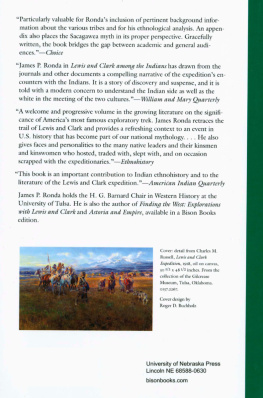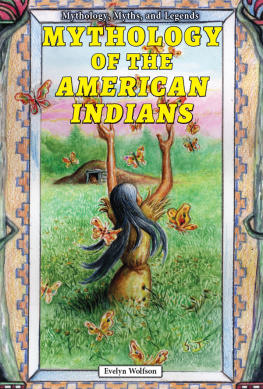INTRODUCTION.
Table of Contents
In the year 1695, a number of savans associated in Paris for the purpose of procuring information respecting the American Indians. They were called shortly The Theoretical and Speculative Society of Paris, but their title at large was The Society for Prosecuting Researches in the Western Hemisphere, and for procuring Speculations to be made, and Theories drawn up, of the Origin and History of its Ancient and its Present Inhabitants. The undertaking met with almost prompt and cordial support; the proudest names and the brightest lights of the age were enlisted in it. The celebrated Madame de Maintenon became the patroness, forbidding, however, the Society to speculate upon her affairs; the illustrious Duke de Rohan became the president; the Czar Peter an honorary member; and the Society was otherwise royally and nobly officered and befriended. So numerous were the applications to be received as members, that it was found necessary to establish the rule, since adopted by certain colleges, of conferring diplomas upon all who asked for them. It is stated, that there was as loud a call upon the time and attention of the publishing committee, no fewer than seven hundred papers of theories and speculations, all essentially varying, having been presented at the second weekly meeting.
It will be seen from the date that it was a very important era in speculative philosophy. Father Hennepin had just returned from Canada, and published his Discovery of a Large Country, the greater part of which had remained unknown till then, and has not been seen since. Other French missionaries were daily arriving from New France, as the French possessions in America were denominated, and spreading tales, partly true, partly-false, of the wonderful things they had seen. The questions so very important and so essential to be solved, whether the ancient inhabitants of North America, the race which is supposed to be extinct, were of Malay origin, and came from Australasia, or from the islands of the Pacific Ocean, and whether the surviving race are descended from the Tartars, the Scandinavians, the Jews, or the Welsh, began to be agitated about this time, though they were not debated with the profound shrewdness and sagacity which Adair, Barton, Boudinot, and other enlightened men, have since evinced on the subject.
With a view to remove the difficulty, and solve the problem, if it were solvable, it was determined by this learned Society to dispatch forthwith to America a man, whose mind should be well stored with science, literature, and philosophy, whose constitution and habits of body should be equal to the hardships he must necessarily undergo, and who should be of a temper to despise the dangers he must of course encounter, in prolonged travels among scattered tribes of wild and barbarous Indians. It was almost impossible, the Society knew, to find a person fitted in every respect for the mission. In an age of theories, it is no easy matter to meet with a man possessed of the common elements of being, who has not submitted to the tyranny of opinion, and adopted the theory most in vogue. Few of us like to be singular, and hence we often adopt opinions, which, at first, we entertain most unwillingly, but which, after we have defended a few times, we come to love most heartily. Nothing so heightens our passion for a beautiful woman as obstacles thrown in our way; nothing so confirms our admiration of a theory as shallow cavils; a weak battery raised against a besieged town always increases the courage, and heightens the resistance, of the besieged.
In respect of the person who should be sent on this honourable mission, the Society were for a long time much perplexed, and began to fear the "foundering of their hobby from want of a jockey of required weight." It was necessary that he should be deeply imbued with classic lore, and profoundly skilled in languages, because he was to "detect lingual affinities," and further, might have to read manuscripts, and decipher inscriptions, of the ancient people. He was required to be deeply conversant with military science, in all its details, for he was to report of the nature of Indian tactics, fortifications, and defensive structures; and it was essential that he should be a theologian, for he was not only to sow the Word as he went, but to gather, if possible, from the religious opinions, rites, and observances, of the nations scattered over North America, proofs of a similitude to other people, or to accumulate data for the opposite belief. It was very difficult to discover a man so eminently gifted and taught, and the Society found themselves heavily burthened with the search. Nevertheless one was at length found, imbued to a reasonable degree with the requisite qualities in the person of M. Philippe Verdier, of the city of Nanci. They applied to him to undertake the proposed mission, and he consented, protesting, according to custom, his utter unworthiness, and his belief that France had many sons more competent to the task than himself.
M. Verdier had studied in his youth, with the view of becoming a priest, and was profoundly skilled in the learning proper for that vocation. Afterwards, when he had abandoned all thoughts of entering the priesthood, he served in Holland under Cond, and there, and in many other countries, in succeeding wars, acquired the character of a valiant soldier and expert tactician. Excellence in poetry and metaphysics came to him naturally, and a thorough acquaintance with languages, both dead and living, by laborious study and prolonged travel. He had resided some time in the Australasian islands and those of the Pacific Ocean, and had travelled over the Peninsula of Malacca and the Island of Madagascar. He had thence brought numerous things which have since been of great service to philosophers, in explaining difficulties and solving problems connected with the antiquities and history of the western aborigines. His museum of curiosities contained a feathery mantle such as were found enwrapping the American mummies, a pair of mocassins made of the rind of plants, curious carvings which were pronounced by the French savans to resemble much the pieces of sculpture brought by M. Jaques de Numskull from the Ohio, and a human cranium or two, to which were added a Madagascar humming-bird, and a Malacca pepper plant. From the nature of these acquisitions, he was supposed to be well qualified to decide upon the merits of that part of the theory of the indigenous inhabitants of America, which represents the extinct race as descended from the Malays of eastern Asia!!!
M. Verdier was quite as well qualified to act upon the other theory. He had travelled to Tartary in the suite of the French ambassador, and resided some years at the court of the Great Khan, where he had acquired the Tartar language, and become deeply learned in the history and customs of that ancient people. He had taken numerous drawings of their physiognomy and features, and many casts of Tartar visages. With a view to learn their opinions of the Deity, and a future state, he had officiated for a full year as the conjuror or powwow of a tribe. When he returned to Europe, he brought with him a couple of human teeth, a pipe, a bow and arrow, a jackall, a wild sheep, a sharp-nosed, thievish Siberian cur, with his sleigh and harness, and a very pretty Samoyede girl, the last with a view to ascertain the peculiar cast of features and shade of complexion which should mark a half-breed, which he was so fortunate as to possess in a short time thereafter, together with a couple of copies to bestow upon his friends.










